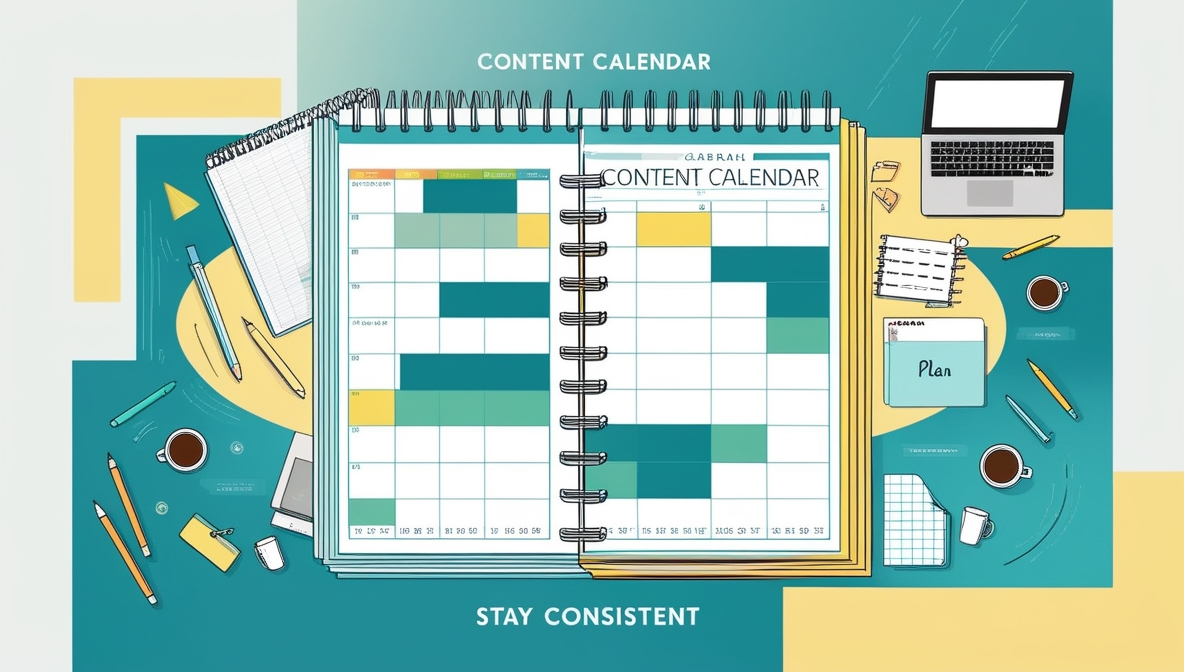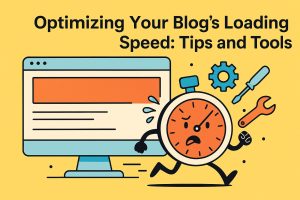Creating a Content Calendar: How to Plan and Stay Consistent
A content calendar does more than organize your schedule; it turns planning into a tool for consistency and clarity. With a well-structured content calendar, you’ll ensure content flows in alignment with your strategy, covering themes that matter to your audience. Here’s a step-by-step guide to building a content calendar that supports your goals and simplifies your creative process.
1. Define Your Content Goals
If you’re just learning how to start a blog, a content calendar can structure your publishing schedule and align it with your primary goals from the beginning. Understanding your goals gives purpose to every post. Are you aiming to increase engagement, drive traffic, or build brand awareness? Start with a clear idea of what you want to achieve so every entry on your calendar aligns with these targets.
- Identify Key Metrics: Decide how you’ll measure success. Metrics could include engagement rates, web traffic, leads generated, or brand mentions.
- Determine Content Types: Select the types of content that best serve your goals, like blog posts, social media updates, newsletters, or videos.
- Map Goals to Audience Needs: Review audience insights to align your content topics with what they value most.
2. Audit Existing Content
Performing a content audit helps highlight what’s working and where there’s room for improvement. Audits bring clarity to gaps in your content strategy and reveal patterns that can guide future topics.
- List and Categorize Current Content: Start by organizing existing posts by type, topic, and performance metrics.
- Analyze Performance Data: Review engagement data, SEO rankings, and reader comments to identify successful content pieces.
- Identify Content Gaps: Pinpoint topics that resonate with your audience but haven’t been covered extensively.
3. Choose Your Content Themes and Topics
With goals and gaps identified, define themes for your content. Themes provide structure and ensure a balanced mix of topics that align with audience interests.
- Seasonal Themes: Plan around holidays, seasonal events, or industry milestones.
- Core Topics: Develop a set of core topics that consistently interest your audience, like industry insights, how-tos, or product updates.
- Trend Integration: Factor in trending topics relevant to your niche to keep content timely and engaging.
4. Determine Your Posting Frequency and Channels
Decide how often you’ll post on each platform. Consistency is key to maintaining audience engagement.
- Set Weekly or Monthly Frequency: Plan a realistic posting cadence. Weekly posts may work well for blogs, while daily posts might suit social media.
- Assign Content Channels: Determine the best platform for each content type. Blog posts can drive traffic, while Instagram stories might work well for visual content.
- Adjust Based on Engagement: Monitor audience responses and adjust your frequency and platforms based on where engagement is highest.
5. Select Content Types for Each Platform
Every platform has a unique style and user expectations. Tailoring content types to each platform will boost engagement and deliver content in formats that best suit your audience.
- Blogs and Articles: Long-form content is ideal for detailed analysis or educational topics, helping establish authority.
- Social Media Posts: Visual and concise, social media posts work well for quick updates, engaging questions, and visual storytelling.
- Emails and Newsletters: Use these to reach a dedicated audience with exclusive updates, product news, and personalized insights.
6. Plan Content Creation Workflow
A streamlined workflow ensures content gets produced, edited, and published on time. Define roles, responsibilities, and timelines to stay organized.
- Assign Roles: Identify who handles content creation, editing, graphics, and publishing. Clear roles reduce delays and enhance accountability.
- Set Deadlines: Include buffer time for drafts and revisions to maintain quality without rushing.
- Create a Review Process: Define a review process to ensure each piece aligns with brand voice, goals, and quality standards.
7. Use Tools to Streamline Planning
Leverage tools to organize, schedule, and automate parts of your content workflow. There are many blogging tools for beginners, like Trello and Google Calendar, that simplify planning and keep your content organized from day one. Many tools offer built-in analytics to track content performance.
- Content Calendar Software: Tools like Trello, Asana, and Google Calendar help visualize and organize your publishing schedule.
- Scheduling Tools: Hootsuite, Buffer, and Sprout Social allow you to pre-schedule posts, making daily posting easier to manage.
- Analytics Platforms: Use Google Analytics or platform-specific tools to track which content resonates with your audience.
8. Establish a Consistent Workflow
Consistency is a byproduct of routine. Develop a weekly or monthly workflow that includes brainstorming, content creation, and publishing to keep things on track.
- Weekly Planning Sessions: Set aside time each week to plan, write, and schedule content for the week ahead.
- Monthly Review and Adjustment: At the end of each month, assess content performance and make necessary adjustments to your calendar for the coming month.
- Use Templates: Create templates for recurring content types like blogs, newsletters, or social media posts to speed up the creation process.
9. Implement SEO and Keyword Planning
Search engine optimization (SEO) should be an integral part of your content calendar. By researching and planning keywords ahead of time, you can integrate them naturally.
- Conduct Keyword Research: Use tools like Ahrefs, SEMrush, or Google Keyword Planner to find relevant keywords.
- Add Keywords to Content Titles and Descriptions: Include primary and secondary keywords in titles, headers, and descriptions.
- Plan Content Around High-Volume, Low-Competition Keywords: Target keywords that have a good search volume but aren’t too competitive to increase chances of ranking well.
10. Review and Refine Your Calendar Regularly
A content calendar isn’t a set-and-forget tool. Regularly reviewing your calendar allows you to make timely updates based on new trends, audience feedback, or unexpected events.
- Track Performance Metrics: Monitor engagement metrics and adjust content types or topics based on audience feedback.
- Refine Content Themes and Topics: If a theme doesn’t perform well, consider replacing it with one that resonates more with your audience.
- Update Calendar for Seasonal or Time-Sensitive Content: Add new events, holidays, or seasonal topics to your calendar to keep content fresh and timely.
Sample Content Calendar Template
Below is a sample format for your content calendar to help organize and visualize your schedule:
| Date | Content Title | Content Type | Platform | Assigned To | Status | Notes |
|---|---|---|---|---|---|---|
| March 1 | “The Basics of Keyword SEO” | Blog Post | Website | Sarah | Drafting | Focus on beginner keywords |
| March 2 | “Instagram Tips for Growth” | Social Media | Alex | Scheduled | Tag industry leaders | |
| March 3 | “Weekly Newsletter” | Mailchimp | Jake | In Review | Include latest blog updates | |
| March 5 | “Spring Sale Announcement” | Social Media | Facebook, Twitter | Ella | Completed | Emphasize limited-time offer |
Final Thoughts on Staying Consistent
A content calendar is a strategic tool that keeps your publishing organized, consistent, and aligned with both your brand goals and audience interests. By planning in advance, you can create a steady flow of relevant content, track performance, and adjust based on feedback and trends. Regular reviews help you stay responsive and ensure that each piece contributes meaningfully to your overall content strategy.














Post Comment